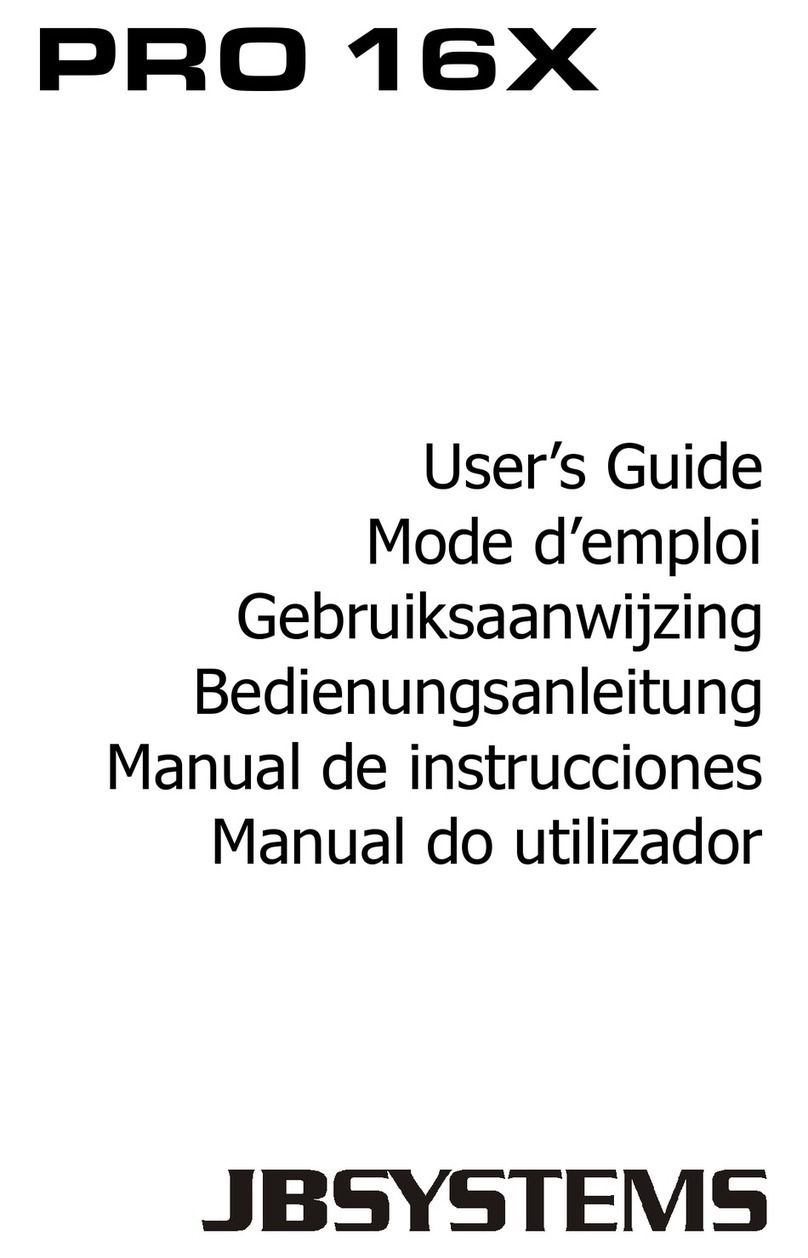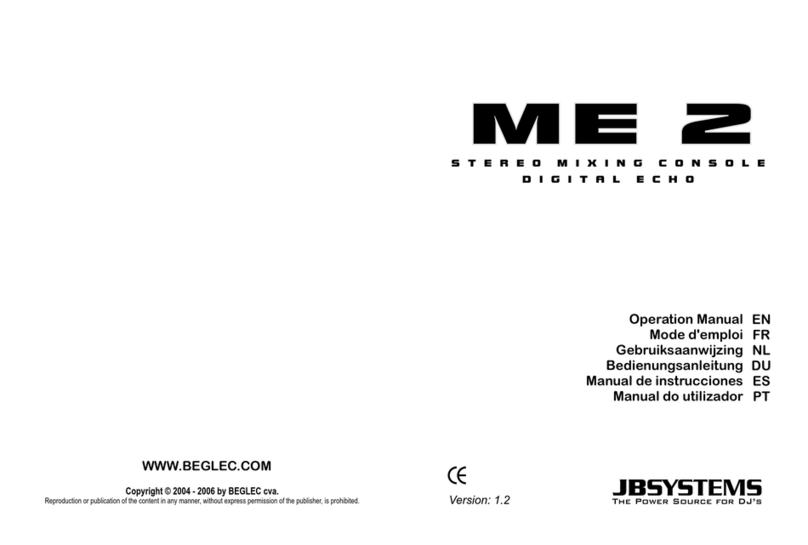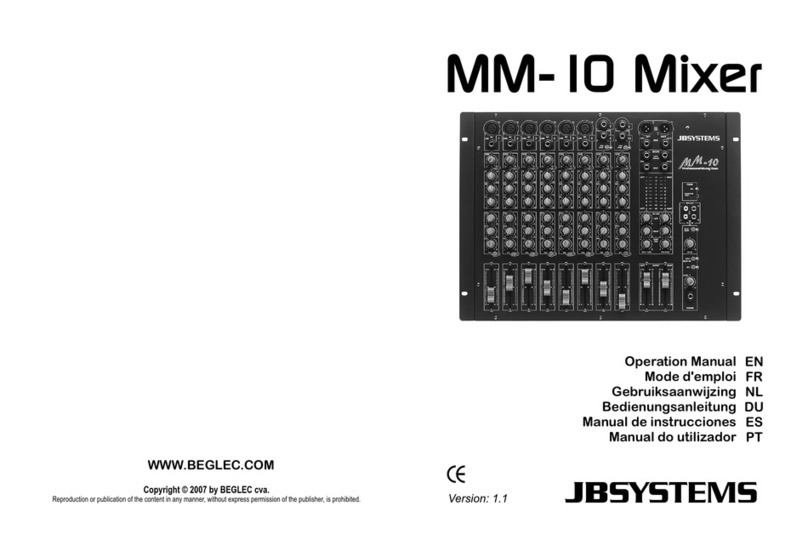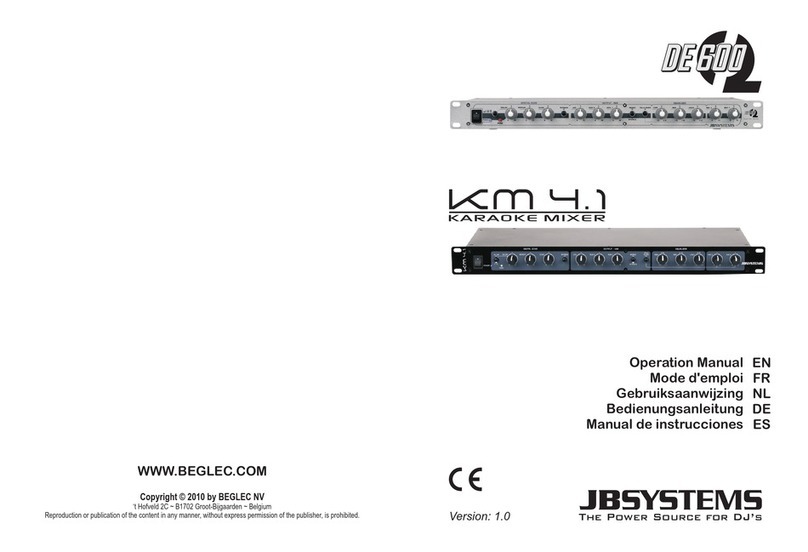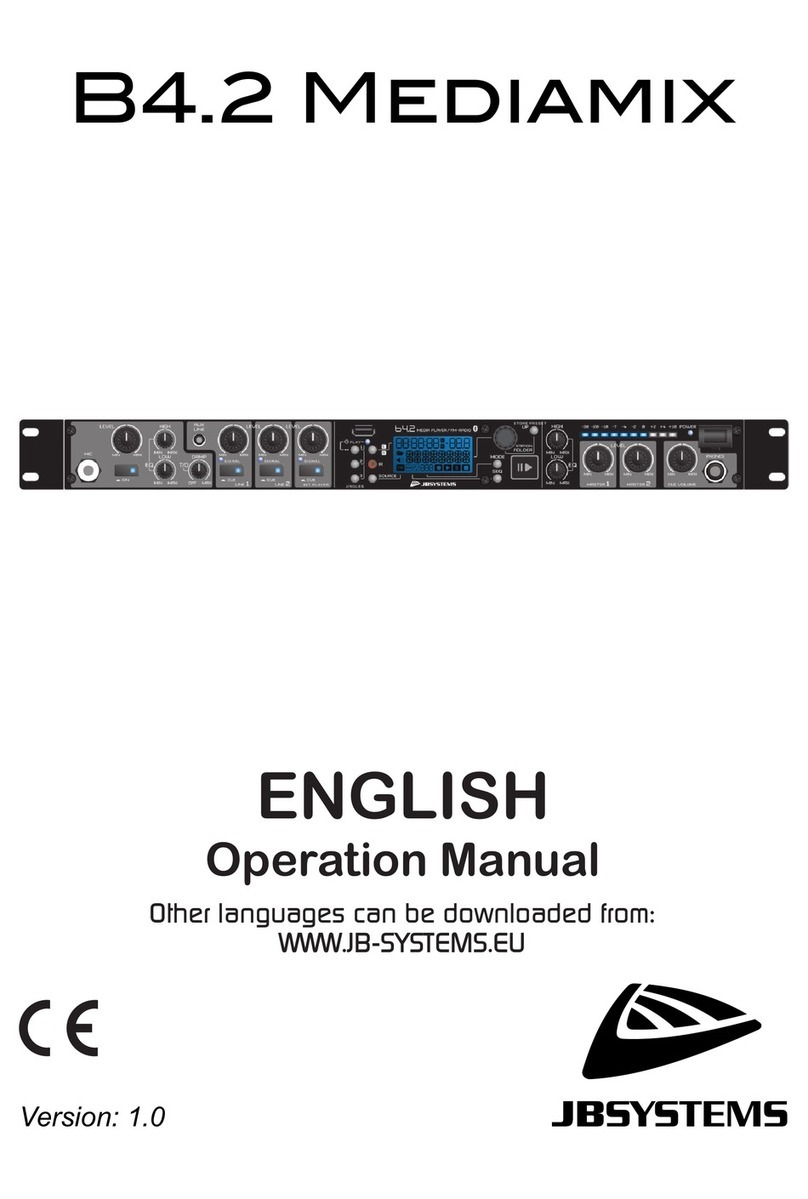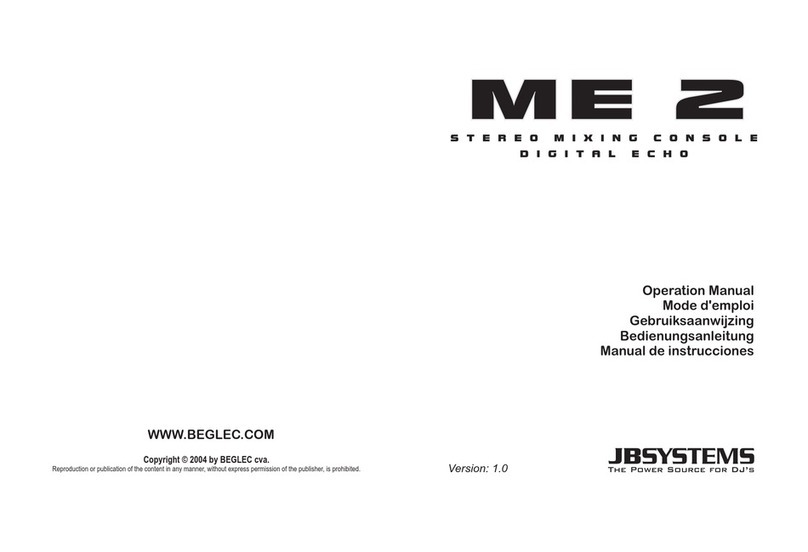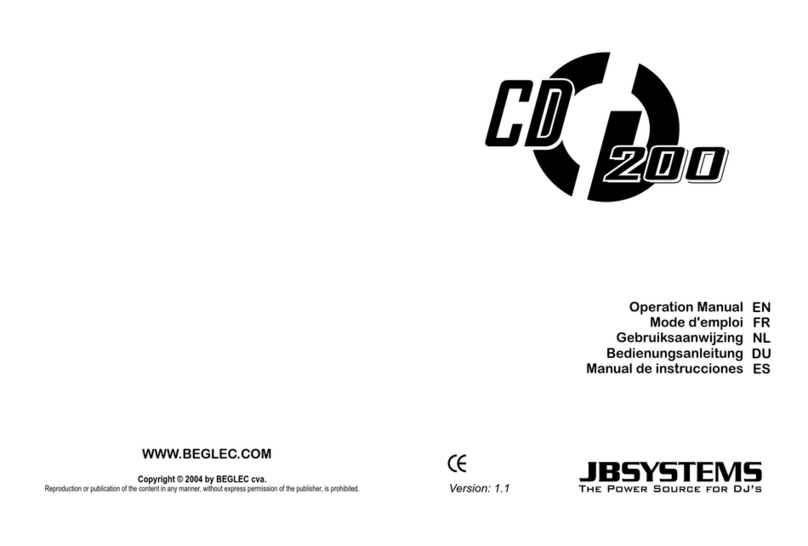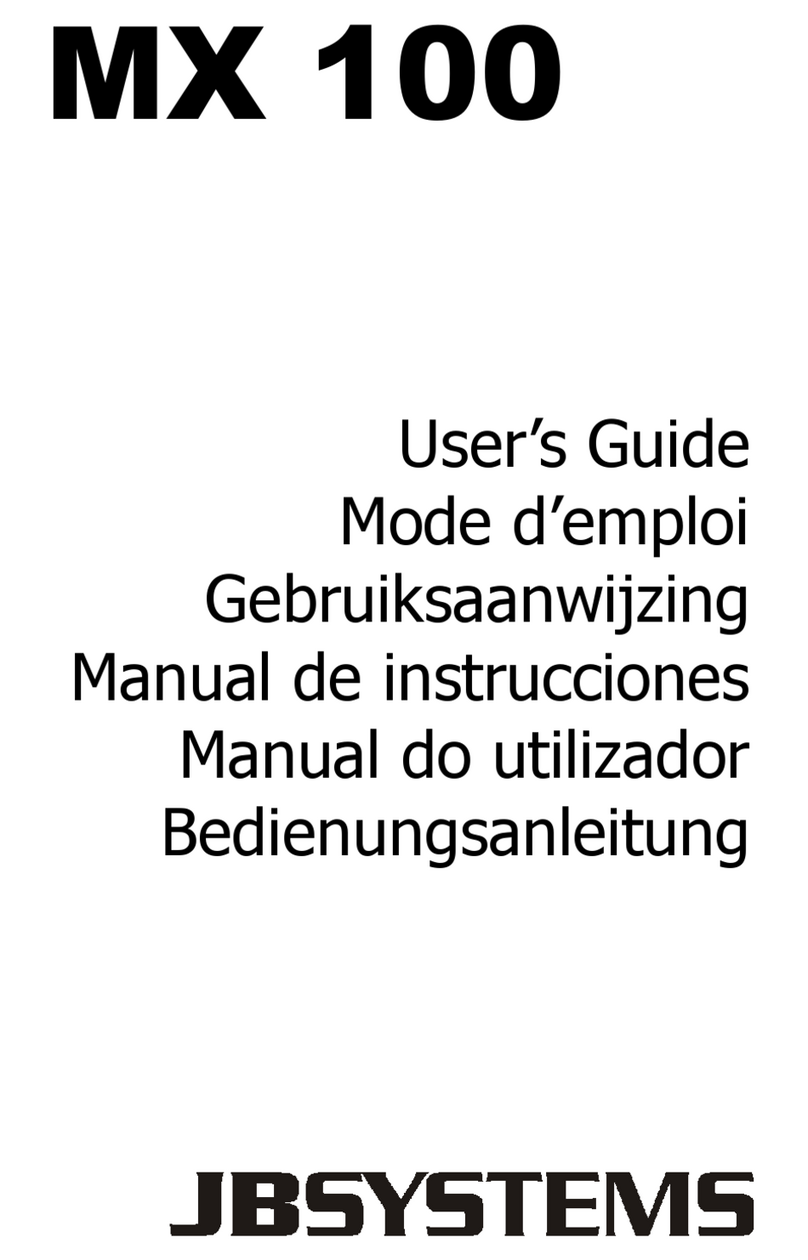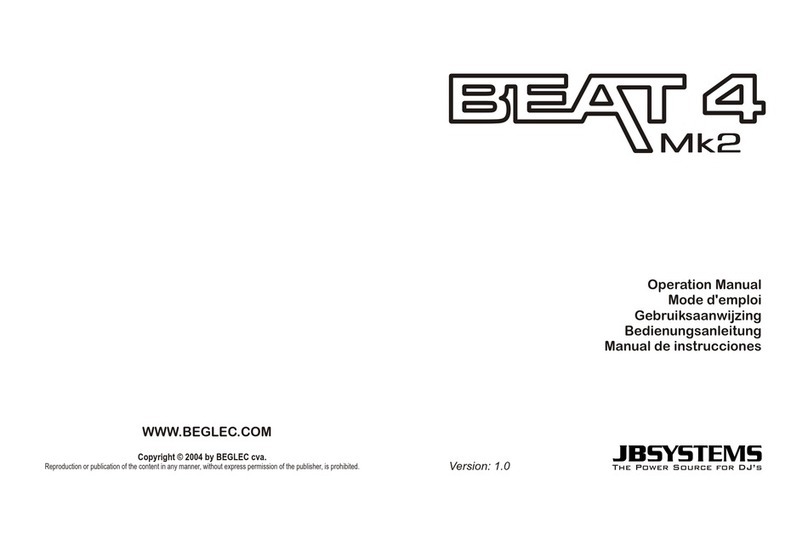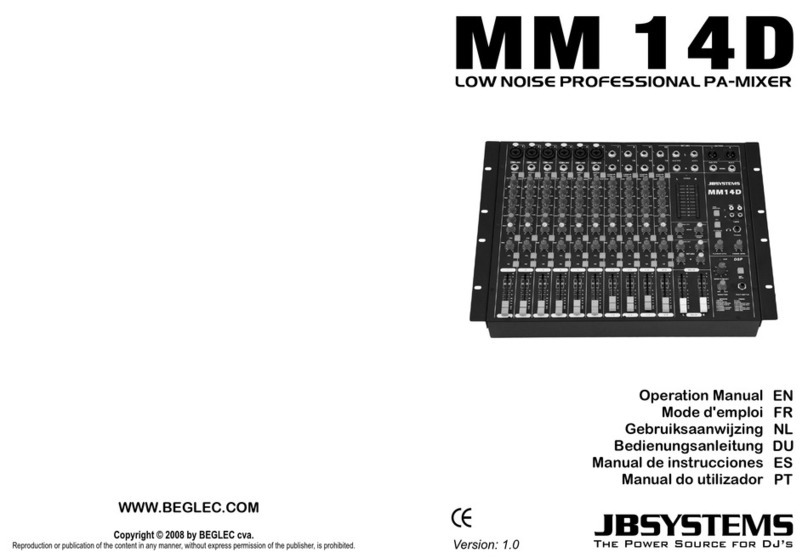ENGLISH OPERATION MANUAL
JB SYSTEMS®4/6 MIX 7.1
11. Master output level meter: Displays the output level set by the [master] level control (8). Note that the
setting of Max. level control (27) on the back panel does not affect the display of this meter.
12. Power LED: The LED is on when the unit is switched on.
13. Power switch: Switches the unit on and off. Make sure you switch the unit off when not in use.
FUNCTIONS (rear)
14. AC mains input and fuse holder: Use the supplied AC cord to connect the unit to AC mains. Make
sure voltage and frequency stated on the unit comply with your local AC supply. The fuse can be
accessed by the small drawer at the AC inlet. To change the fuse, unplug the AC cord first, pull out the
fuse drawer and replace the fuse ONLY with a fuse of SAME voltage and rating. If the fuse blows again
after replacement, hand over the unit to qualified service personnel for repair.
15. Gain control for the input: used to adjust the input sensitivity to compensate the different source
volumes.
16. Line inputs: These are line-level RCA/cinch inputs.
17. Source selector switch: allows you to select the desired input source for each channel. You can switch
between the line input (16) and the microphone input (19).
18. Balanced Line input: used to connect a balanced stereo line source to the unit (PA mixers, etc). Note
that the signal of these inputs is disabled when a connector is inserted to the front [AUX] input (1).
19. Microphone input: This is a balanced JACK-connector to connect a dynamic microphone. If needed,
the unit can be modified internally to provide phantom power for condenser microphones.
20. Gain control for the microphone input: used to adjust the input sensitivity to compensate the different
source volumes.
21. Microphone input: This is a balanced JACK-connector to connect a dynamic microphone. If needed,
the unit can be modified internally to provide phantom power for condenser microphones.
22. Balanced stereo master output: Balanced terminal block output carrying the same signal as output
(28), often used for fixed installations.
23. Music Mute input: This is a terminal block input which allows to remotely mute the masters by simply
shortening the contacts.
24. Emergency input: This is an auto-sensing, balanced terminal block input which allows the connection of
an emergency evacuation system. Once an audio signal is present on this input, all output signals will be
muted and the emergency message/signal from this input will become audible instead.
Microphone routing for muting/emergency: Depending on the application, user habits and local
safety requirements, it can be useful to either enable or disable the local microphone during an
emergency case where an incoming emergency signal into the emergency input (24) shuts down all
program signals. The advantage of disabling the microphones for this case is that the local user can
not interfere the legibility of the emergency announcement by using his own microphone, the
disadvantage is that if for whatever reason the emergency announcement does not stop, the local
user can still give emergency/evacuation guidance by means of the local microphone. As a factory
default, the microphones are not muted during an incoming emergency message. To change this, a
qualified installer or technician must open the unit after disconnecting it from AC supply. Refer to the
drawing to locate jumper “Emergency MIC setting” on the rear panel PCB: set the jumper in the
desired position..
25. Emergency volume control: This control sets the volume of the emergency input (24) sent to the
[MASTER] output.
26. Talkover adjustment: The talkover circuit make it possible to automatically damp the music while you
speak into the microphone that is connected to the dedicated microphone channel (21). There are two
controls to make sure that the talkover works as expected:
•Talkover Damping (7) on the front: adjusts the amount of damping once the talkover is active. If no
talkover effect is required the DAMPING control can be set to “off”.
